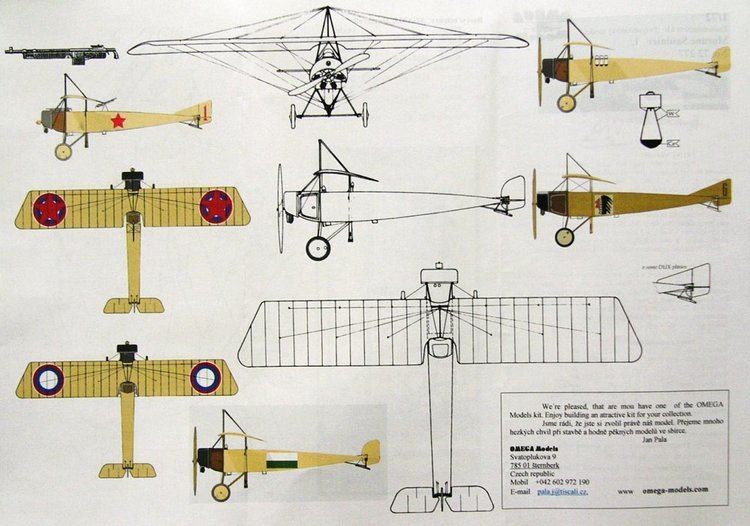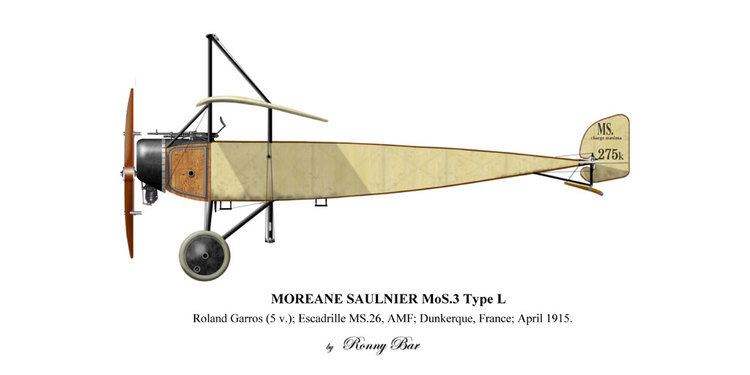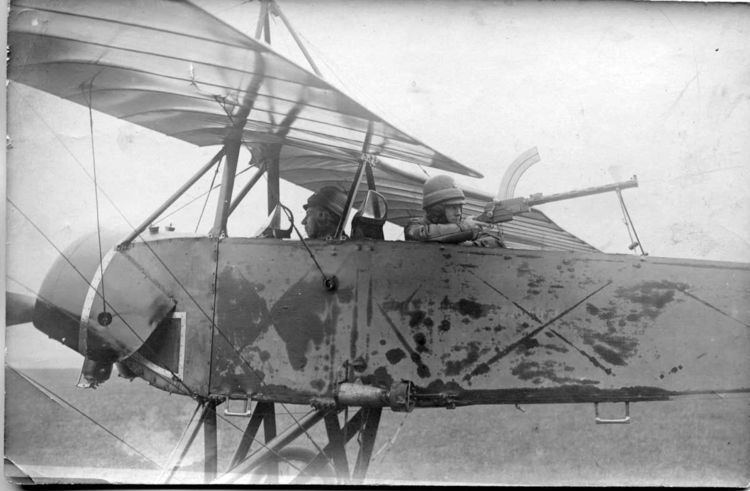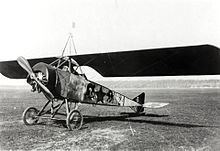Top speed 115 km/h Length 6.88 m First flight August 1913 | Wingspan 11 m Introduced 1914 | |
The Morane-Saulnier L, also known as the Morane-Saulnier Type L was a French parasol wing one or two-seat scout aeroplane of the First World War. The Type L became one of the first successful fighter aircraft when it was fitted with a single machine gun that fired through the arc of the propeller, which was protected by armoured deflector wedges. Its immediate effectiveness in this role launched an arms race in fighter development, and the Type L was swiftly rendered obsolete. The original Type L used wing warping for lateral control, but a later version designated Type LA was fitted with ailerons.
Contents
- Operational history
- Morane Saulnier versions
- Pfalz built versions
- Operators
- Specifications Type L
- References

Built by Morane-Saulnier, large numbers of the Type L were ordered by the French Aviation Militaire at the outbreak of the war, being designated the MS.3. In total about 600 Type Ls were built and, in addition to the French air force, they served with the Royal Flying Corps, Royal Naval Air Service and the Imperial Russian Air Service.
The type was also produced under licence in Germany by Pfalz Flugzeugwerke as the unarmed A.I and A.II scouts (with 80 HP and 100 HP Oberursel engines respectively). About 60 were built for Bavarian air service. A few were later modified as the E.III fighters. A few Type Ls captured by Germany were fitted with a single German Spandau LMG 08 machine gun. These captured and converted aircraft are often mistaken for Pfalz E.IIIs.
About 450 aircraft were licence-built in Russia by Duks and Lebed works.
The Morane-Saulnier L was also built under licence in Sweden as the Thulin D.
Operational history

In December 1914 the famous French aviator Roland Garros, then serving with Escadrille 23, worked with Raymond Saulnier to create a gun synchronizer, using the gas operated Hotchkiss light machine gun. However the firing rate fluctuated too much for the synchronizer to function properly. As an interim measure, they then designed a "safety backup" in the form of braced "deflectors" (metal wedges) fitted to the rear surfaces of the propeller blades at the points where they could be struck by a bullet. Garros took his Type L fighter into combat with the deflectors in March 1915 and achieved immediate success, shooting down three German aircraft in April, a noteworthy feat at the time. The copper and brass-jacketed bullets that the French used were not likely to damage the harder steel of the wedges themselves. On 18 April 1915, Garros' deflector-equipped Type L force-landed behind German lines and was captured before he could burn it.

Ironically, three two-seat Morane Type L aircraft were also the first victims of a production fighter. Leutnant Kurt Wintgens, flying the Parabellum machine gun-armed Fokker Eindecker M.5K/MG production prototype E.5/15, basically copied from the Morane-Saulnier H but constructed using the typical Fokker wire-braced welded steel tube fuselage and fitted with the Fokker Stangensteuerung synchronized gun, downed one just east of Lunéville on July 1, 1915, followed by two similar victories on July 4 and 15, with the final one being Wintgens' first confirmed aerial victory.

About 50 Type Ls were delivered to Britain's Royal Flying Corps, which used them as reconnaissance aircraft during 1915, with a further 25 being operated by the Royal Naval Air Service. On 7 June 1915 one of these aircraft, flown by Flight Sub-Lieutenant Reginald Alexander John Warneford of 1 Squadron RNAS intercepted Zeppelin LZ.37, destroying it, the first Zeppelin to be destroyed in the air. Warneford received the Victoria Cross for this achievement.
Three Pfalz AII's were used by the Ottoman Empire in an attempt to combat the growing threat of the Arab Revolt
A Morane-Saulnier "Parasol" was used for the first flight by an airplane across the Andes on April 13, 1918, when the Argentine aviator Luis Candelaria flew from Zapala, Argentina, to Cunco, Chile; the flight lasted 2 hours 30 minutes and reached an altitude of 4,000 meters.
Morane-Saulnier versions
Pfalz-built versions
Operators
Specifications (Type L)
Data from Aeroplanes of the Royal Flying Corps (Military Wing.)
General characteristics
Performance
Armament
